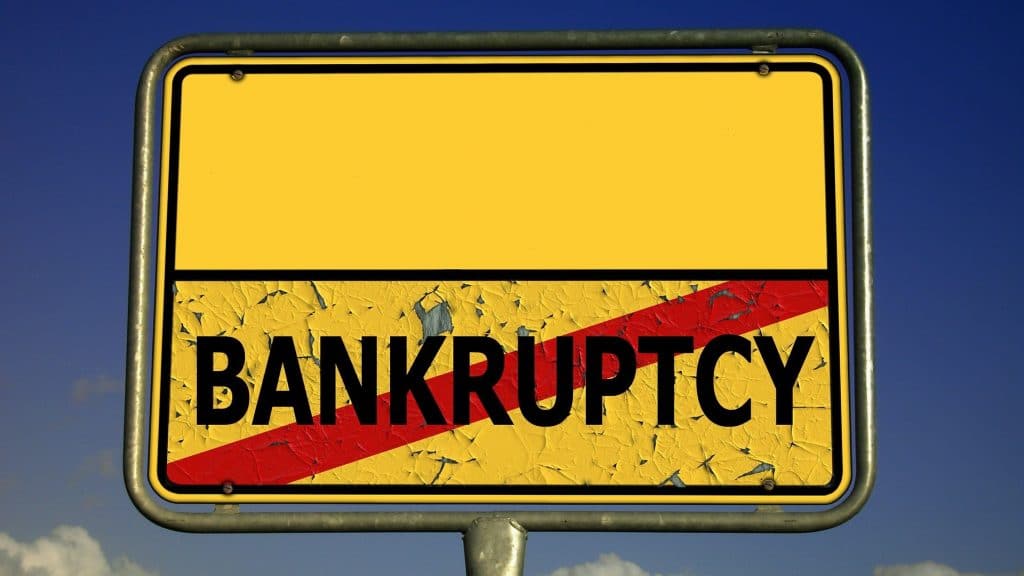The Truths & Myths Behind Medical Bankruptcies

Recent independent reports showed that medical costs are the leading cause of bankruptcy in the US. Estimates done in different years show that around 530,000 US families are affected by medical bankruptcies each year. What’s even more troubling is that seniors are especially endangered by the risk of medical bankruptcy. Read on to find out everything there is to know about the matter!
Medical Bankruptcies in the US
It’s painfully simple—skyrocketing healthcare costs lead to increasing medical debt and, therefore, bankruptcy. According to the National Health Expenditure Accounts, the total healthcare spending in the United States has increased from $27.2 billion in 1960 to $3.8 trillion in 2019. In contrast, the cost per person rose from $146 to $11,582 per year. Even Obamacare failed to address rising healthcare costs adequately. By 2009, the increasing health care costs were consuming 19% of the total federal budget of $3.5 trillion.
According to a 2009 Harvard study, bankruptcies due to medical bills accounted for 62.1% of all bankruptcies in the US. The estimated rate of bankruptcy, determined by the study, included not only people who mortgaged a home due to medical costs but also those who had medical bills greater than $1,000 and those who lost at least two weeks of work due to medical problems.
Other researchers, however, criticized the inclusion of the last two reasons. Obama stated in his speech in 2009 that every 30 seconds, a medical bankruptcy occurred, resulting in one million bankruptcies per year. Even though this assumption was based on the Harvard study, Obama’s estimates were higher than the real rate, which was about 877,372 cases in 2009.
Another study, conducted by Gross and Notowidigdo in 2011, showed that out-of-pocket medical costs produced 26% of bankruptcies. However, they recruited only low-income debtors, which could be the reason for the low percentage.
Two more independent studies carried out in 2013 again showed different results. NerdWallet Health declared that the percentage of bankruptcies due to medical bills was 57.1% of all cases, based on the Harvard study, but this excluded bankruptcies due to job losses from illness. CNBC extrapolated data from the NerdWallet Health study and applied it to everyone in the household of those directly affected by the bankruptcy. Thus, the number of people impacted by bankruptcies due to medical bills increased to 2 million.
The Kaiser Family Foundation (2015) stated that 26% of Americans aged 18–64, or about 52 million adults, struggled to pay for healthcare costs. The survey estimated that 2% of them, or one million people, declared bankruptcy because of medical bills that year.
The most recent study, conducted in 2019 by the Kaiser Family Foundation (KFF) / LA Times, uncovered some troubling statistics on medical bankruptcies by year. As a matter of fact, in 2019, around one in five people (19%) claimed that a collection agency had contacted someone in their household in the last 12 months due to medical bills. And 9% confirmed they had declared personal bankruptcy due to medical bills at some point in their lives (involving 2% who did so in the last 12 months).
Medical bankruptcies statistics reveal that the total US medical debt was $45 billion. Even though 58% of American retirees are in good health, the disturbing fact is that the average 65-year-old couple will face medical bills of about a quarter-million dollars during retirement, even with support from the national health insurance program of the US, Medicare. Here, the savings for retirement, such as a 401k plan, play a considerable role as a backup plan for covering otherwise unpayable medical bills and avoiding bankruptcy.
The Disparity of the Data on Medical Bankruptcies in the US
The mentioned percentages and numbers of people affected by bankruptcies of this kind differ significantly. There are several reasons for that, and the main is that there is no requirement to declare the motive for filing bankruptcy. In return, the rates of bankruptcy due to medical bills are estimated using surveys. Moreover, different studies use different methods for defining and estimating medical debt.
Furthermore, many people may also have:
- underlying debt
- low income
- little savings
- unsteady jobs when their medical debt piles on
Thus, the medical bills were not the only reason for bankruptcy. The Kaiser Family Foundation study revealed that 8% of people declared bankruptcy because of the simultaneous presence of medical and other debt, whereas only 3% considered it medical debt bankruptcy alone.
Finally, when we compare the insured to the uninsured, the former were more likely to declare bankruptcy than the latter—3% vs. 1%, respectively. Although medical insurance aims to protect people from the debt brought on by medical expenses, about one-third of the patients weren’t ready to meet unexpected related payments (deductibles, co-insurance costs, etc.).
The annual and lifetime limits are also distressing. Another third of those filing bankruptcy on medical bills weren’t aware that a particular hospital or service wasn’t part of their plan. Nevertheless, some companies denied about 25% of the claims or even canceled the insurance. All these facts explain how it’s possible for coverage to run out and how insured patients can also end up filing for bankruptcy due to medical bills.
Medical Bills Can Bankrupt
As the Harvard study showed, medical bills remained the primary factor in filing bankruptcy in more than 50% of all bankruptcy cases. Many people see a chance to overcome medical debt by filing for medical bills bankruptcies.
As we’ve already explained, not only those who don’t have health insurance but also insured people are left with overwhelming medical debt. Some of the reasons for that are the increasing medical insurance premiums. Thus, even the Affordable Care Act marketplace policies are affordable only because of the high set policy deductibles.
Deductibles are the remaining money that has to be paid by the patient before their insurance covers any other medical bills. Nowadays, deductibles can reach $10,000 for one person or $20,000 for a whole family.
The Best Way to Avoid Medical Debt Bankruptcy
One of the best ways to skip bankruptcy related to medical bills is disease prevention, primarily by managing chronic illnesses (mainly diabetes, cardiovascular diseases, etc.) and keeping away from their medical complications. However, it is clear that accident-related medical costs can’t be avoided.
Furthermore, health insurance can’t wholly protect from higher medical prices since there can be unforeseen out-of-pocket expenses. If this is the case, a financial backup is needed. Unfortunately, according to medical bankruptcies statistics, only one-third of Americans have more than $1,000 in savings. It’s recommended that people store away 3–6 months of expenses in savings to cover at least the amount of possible deductibles.
What Happens When People File Medical Bankruptcies?
Filing for bankruptcy is a controversial decision. On the one hand, it’s subject to moral judgment and can even be seen as a failing. On the other hand, however, there are also benefits of declaring bankruptcy, like a chance to get a fresh start, move forward, and get out of uncontrollable debt due to an accident or severe illness.
Bankruptcy can be good for the economy because the affected people become contributing members of society again. The US Constitution established the “uniform laws on the subject of bankruptcy throughout the United States” as a mechanism to help people in such situations.
As for what happens to medical debt after death, the medical bills don’t go away. Instead, medical debt, as well as all the other debt you have, is paid by your estate. And by estate, we mean all the assets you owned at death. Moreover, even though life insurance programs guarantee payments after the insured person’s death, health insurance pays for their medical expenses.
The Impact of Medical Bankruptcies on the Economy
Although all functional aspects of filing for bankruptcy apply to this specific reason as well, discharging medical bills is not one of them, regrettably. A bankruptcy record stays on for ten years, which can make renting or buying a house or getting a loan difficult. Sometimes, bankruptcy can even restrain your job prospects.
A very unpleasant side of declaring bankruptcy is the risk of losing your home. However, that depends on the state. For instance, facts on medical bankruptcies by state show that in Delaware, someone could lose most of what they have due to the seizure of assets. Furthermore, the additional expenses accompanying the bankruptcy, like chapter filing with an attorney, can increase in urban areas.
COVID-19 and Medical Bankruptcies
It goes without saying that a lot of Americans are facing unmanageable medical bills due to coronavirus care. In fact, its estimated the intensive inpatient COVID-19 care cost range from $20,000 to more than $70,000, meaning a great portion of those patients will be left with a considerable part of the bill, possibly at the same time they become unemployed, again, because of the pandemic. So, what happens if you can not pay medical bills?—a question on many people’s minds.
Americans are financially vulnerable to this virus due to their deeper problems with how they pay for health care, which include:
- Cost-sharing—Americans pay higher cost-sharing than other nations, meaning that they are still responsible for more of their care costs even after paying premiums.
- Overall higher medical care prices, compared to other nations—They may often lead to bankruptcy from medical bills.
- Extremely high prices for out-of-network medical care—Someone may use out-of-network care without intending to. For instance, they may go to an in-network hospital but receive care from an out-of-network doctor or be transported by an out-of-network ambulance to the hospital.
- Lack of insurance—About 10% of the population under 65 is uninsured, and many of them can’t afford insurance, so they can’t pay for unanticipated medical care.
Hospital and Doctor Bills Can Be Written off to Avoid Bankruptcy for Medical Bills
In some cases, there’s no need to declare bankruptcy to eliminate medical debt, especially if this is the only debt and the debtor can make other regular payments, such as house or car payments, child support, and alimony. Moreover, medical creditors are better to work with compared to other debt creditors.
A public hospital or doctor of a Medicare or Medicaid patient will send a bill and won’t bother them further. Those medical bills will stay in the billing department for as long as possible before being sent off to a collector and become medical debt collection.
Furthermore, some healthcare providers and doctors are willing to accept a tiny amount of the bill on an installment plan each month. Finally, the medical debt may not affect your credit score much since medical creditors seldom belong to credit reporting agencies.
Conclusion
Bankruptcy on medical bills impacts not only the economy of the country but also people’s lives, including their health, way of living, and quality of life. Elderly patients who might be at risk should educate themselves on how to protect their savings if the worst happens. However, in some circumstances filing for bankruptcy because of unpayable medical bills is the best way out of a grim situation.
FAQs
What are medical bankruptcies?
This kind of bankruptcy is caused by medical debt. In some cases, people could experience this type of bankruptcy due to a combination of reasons in addition to medical bills, such as job loss.
What is the cause of most bankruptcies?
Although bankruptcy paperwork doesn’t require the debtor to declare their motives for filing for bankruptcy, it’s not difficult to determine if the case was related to medical costs. Comparing all the listed debts that led to bankruptcy, we can easily join the dots between bankruptcy and medical bills. Besides, at the debtor’s meeting of creditors, the trustee often questions what led to choosing to file bankruptcy.
How many medical bankruptcies are there?
The latest data shows that around 137.1 million Americans face financial challenges because of medical costs. Furthermore, nearly ten million adults who have health insurance coverage struggle with healthcare-related bills, so we can see that people file medical bankruptcies with insurance, too.
Many households face challenging out-of-pocket payments because of high-deductible insurance plans. Unfortunately, the number of medical bankruptcies since Obamacare continues to increase. Although insurance under the Affordable Care Act aims to give more people coverage, it does not resolve the issue—millions of people with year-round, full coverage are still stunned by medical costs.
How much medical debt do Americans have?
Bankruptcies because of medical debt represent about 66.5% of all filings of bankruptcy. For more than 11 million patients, the vicious cycle forms by taking additional credit debt to cover growing medical bills. Unsurprisingly, the deficit only mounts due to the higher interest rates charged for unpaid balances.
Another 15 million Americans deplete their savings to fund medical bills. Nevertheless, around ten million patients will be unable to pay for rent, food, and utilities because of devastating medical bills, leading to medical bankruptcies in America.
The disturbing fact is that a lot of people in the US try to save money by taking less medication, skipping doses, or even delaying refilling prescriptions. Unfortunately, postponing necessary medication is a short-term fix to a problem that will lead to grave health problems in the long term.
How do you get medical debt forgiven?
Even though the process for getting medical debt forgiveness depends on medical institutions, the application is relatively standard. In order to give you medical bill debt forgiveness, hospitals ask for tax returns, pay stubs, and other documentation. Then, they award forgiveness depending on factors like household size, income, and more.
Can you lose your house due to medical bills?
Even though it’s possible to lose your home due to unpaid medical bills, it’s unlikely. That’s because a medical creditor doesn’t have a mortgage secured by a claim on your home, making it much harder to foreclose to collect what you owe. However, a creditor who follows all the legal requirements could make that happen.
Do medical bills ever go away?
By good luck, medical debt is dischargeable in bankruptcy. One can qualify for a Chapter 7 case under the means test, which calculates whether the debtor can afford to make payments using their income and expenses. In fact, if the means test is not passed, the debtor can file a Chapter 13 for a 3–5-year repayment plan.
In some circumstances, it’s worth negotiating payment arrangements with medical creditors instead of presenting medical bankruptcies cases. However, if the debtor can’t get any satisfaction from working with creditors, either Chapter 7 or Chapter 13 is the next step.






